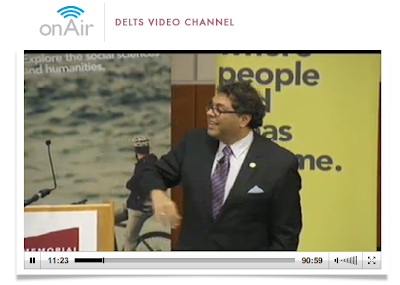 I write a regular column in the Calgary Herald. Here is the full text of my October story:
I write a regular column in the Calgary Herald. Here is the full text of my October story:
Nearly two years ago, Calgarians elected a new mayor and city council with a mandate for real change. As I did last year, I thought it would be helpful to provide a progress report on what’s been done and what work remains for the final year of our term.
In 2011, your council unanimously passed our
fiscal plan for Calgary after consulting with more than 20,000 citizens. The plan begins with these words:
Calgarians have always been innovative, confident, entrepreneurial, and willing to make things better. They expect no less from their city council. We need to continue to transform government, becoming better at delivering the services Calgarians need. We do that by valuing City of Calgary employees as colleagues, and by empowering them to do their jobs better. We will strive to be more efficient and more effective, while focusing on transparency and engagement with all Calgarians.
So, how are we doing? Some changes were quick: finally getting a
direct bus to the airport, starting a pilot project on cutting red tape by approving
food trucks, halving the sprawl subsidy that encouraged unsustainable growth, and improving
snow removal.
Some of the more systemic changes will take longer to implement, but we have laid a strong groundwork to make Calgary an even better place to live in the future, while maintaining our property tax rates among the lowest in Canada.
Significant progress has been made on each of the five main elements of the plan.
First: ensuring every Calgarian lives in a safe community and has the opportunity to succeed. Crime rates are the lowest in a generation, and Calgarians report that they feel that our city is safe. To ensure that all citizens have the opportunity to participate fully in their communities, we also launched the
Calgary Poverty Reduction Initiative. I'm excited about the big ideas coming forth on how we can use existing community resources to help those most in need.
Second: investing in great communities and a vibrant urban fabric. I'm proud of the first investments from the new
Community Investment Fund. We've been able to support parks, libraries, recreation and fire halls and equipment using these newly available funds. Soon, we will also see a
new Central Library and
four new recreation centres in parts of the city that are sorely lacking.
Third: moving people and goods throughout the city efficiently and sustainably. We have embarked on a major strategic, operational and customer service plan for Calgary Transit known as
RouteAhead, and have dedicated major funds — pending provincial government release of the money — to reduce congestion on the existing LRT system and improve transit service to southeast Calgary. Major road projects like the airport tunnel remain on time and on budget, and the enhanced level of snow clearing has received rave reviews.
We are also making a modest, but important, investment in commuter cycling infrastructure. Improving safety and convenience for cyclists reduces congestion on our roads and on transit. Not only does it give people who would otherwise be in a car or on a train another transportation option, it also improves efficiency for everyone by separating bike, vehicle, and pedestrian traffic.
Fourth: making Calgary the best place in Canada for a business to start and flourish. The
cut red tape initiative is already yielding results, saving businesses who deal with the city many hours and thousands of dollars. Council also agreed to consolidate the business tax with the non-residential property tax, eliminating our stand-alone business tax and putting us on par with other Canadian cities.
Fifth: becoming a more effective and disciplined organization. We are undertaking a number of initiatives under the title of “
transforming government” to create a culture of constant, relentless, citizen-focused improvements at the city. This includes the introduction of zero-based budget and operational reviews throughout the organization. We are also launching a major review of our city planning processes to streamline the system and make it easier to build great things.
Finally, we must focus on changing the rules of the game to ensure better financial capacity. As a city of well over a million people, we cannot rely on the whims of other levels of government to fund our capital needs. We require transparent, predictable funding for the long term. In transit alone, we will need up to $8 billion over the next 30 years to fund new capital projects, including new bus rapid transit and LRT lines. Planning for a project of this scope is challenging when we have no idea what funds will be available to finance its construction.
That’s why we are having conversations with the provincial government about getting a city charter for Calgary. While this sounds dry, it is probably the most important thing your council is working on. Getting this right will ensure that the city can continue to grow and be prosperous, free of bickering and buck passing between governments.
I'm proud of what your council has accomplished, but much work remains. Long-term projects require vision and focus. We must be diligent in our stewardship.
The opportunity to be mayor of Calgary is humbling. Thank you for giving me this chance.
- Mayor Naheed Nenshi
You can visit the Calgary Herald online version of this story
here.

